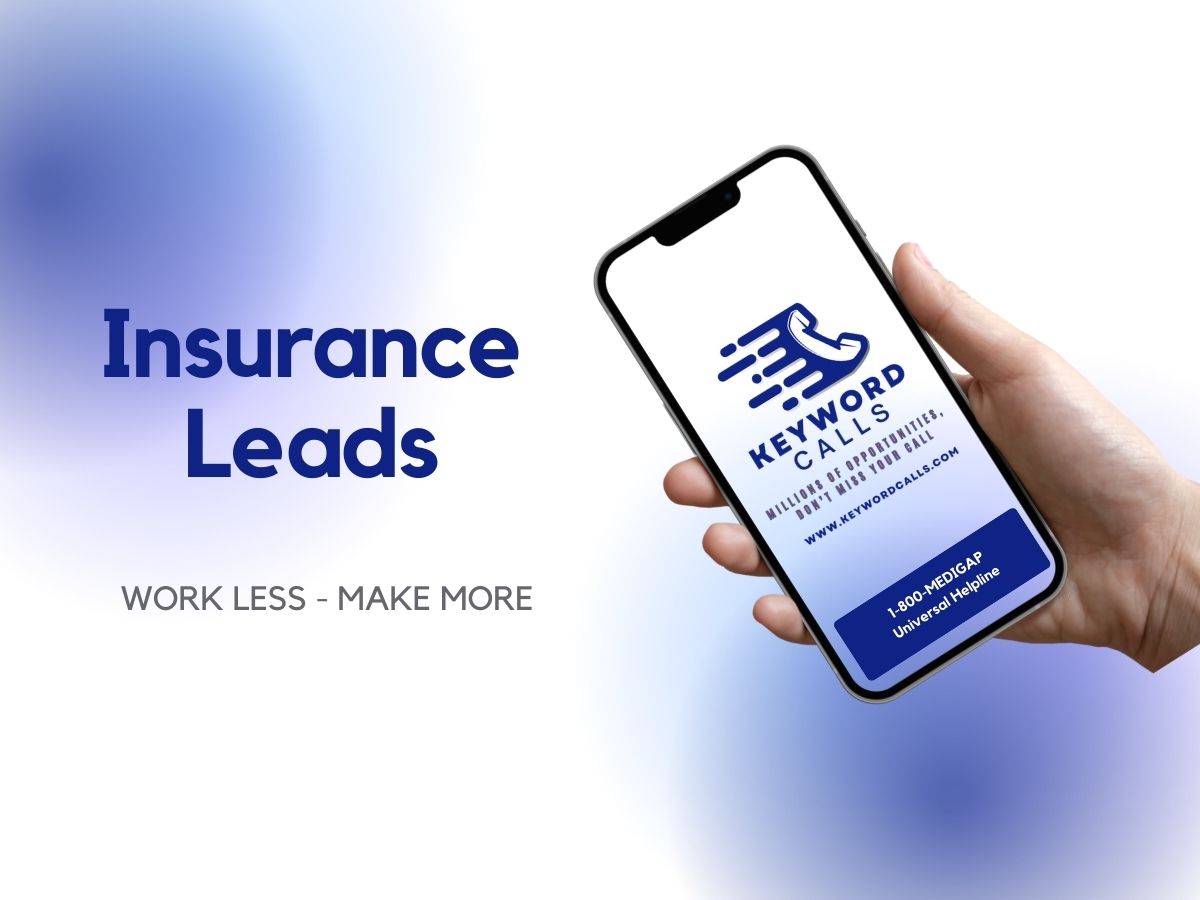No products in the cart.

38.4% of Men and Women in the United States will be diagnosed with cancer at some point during their lifetime.
Worrying about the ability to pay the bills is top of mind for everyone, and the fact is Health Insurance does cover the TRUE COST of a family member who gets cancer.
Your employees worry, and you can help. You can pay foor this benefit or offer it as a PAYROLL DEDUCTION!
THE HIDDEN COSTS OF CANCER
Cancer can bring about various hidden costs beyond the direct medical expenses associated with diagnosis and treatment. Some of these hidden costs may include:
- Lost income: Many cancer patients and their caregivers may need to take time off work or reduce their working hours to accommodate treatment and recovery. This can result in lost income, impacting their financial stability.
- Transportation and lodging: Depending on the location of treatment centers and the need for specialized care, patients and their families may incur significant expenses for transportation and accommodations.
- Caregiver expenses: Family members or friends who provide care and support for cancer patients may face their own financial burdens, including taking time off work, travel costs, and purchasing additional supplies.
- Copayments and deductibles: Even with health insurance, cancer patients may still face out-of-pocket expenses, such as copayments, deductibles, and prescription costs.
- Home modifications: Some patients may need to make modifications to their homes to accommodate their medical needs, such as installing ramps, handrails, or lifts, which can be costly.
- Psychological support: Emotional and psychological support is essential for cancer patients, and counseling or therapy services may not always be covered by insurance, leading to additional expenses.
- Complementary therapies: Some individuals explore complementary therapies like acupuncture, massage, or dietary supplements to manage cancer-related symptoms, which may not be covered by insurance.
- Childcare and household help: For parents with cancer, arranging childcare and household assistance during treatment can add to the financial burden.
- Health-related quality of life: Cancer survivors may require ongoing care, medications, and surveillance, all of which contribute to long-term healthcare costs.
- End-of-life care: For those in advanced stages of cancer, end-of-life care and hospice services can be expensive.
- Travel for specialized care: In some cases, patients may need to travel to access specialized cancer treatments or clinical trials, incurring travel and accommodation costs.
It’s important for individuals and families facing cancer to carefully consider these hidden costs and plan accordingly. Financial counselors, social workers, and support organizations can often provide guidance and resources to help manage these financial challenges. Additionally, health insurance coverage and assistance programs may be available to help alleviate some of the financial burdens associated with cancer care.
Estimated Costs of Cancer not covered by Health Insurance
Certainly, here’s a simplified chart format listing the estimated hidden costs associated with cancer:
| Hidden Cost Categories | Description |
|---|---|
| Lost Income (Months – Years) | Impact on patients and caregivers’ earnings |
| Transportation and Lodging ($18,000) | Travel and accommodation expenses for treatment |
| Caregiver Expenses ($34000) | Financial burdens on those providing care |
| Copayments and Deductibles. ($1000-$10,000) | Out-of-pocket medical expenses |
| Home Modifications-TBD upwards of $17,000 | Costs for adapting the home for medical needs |
| Psychological Support (25,000) | Counseling and therapy expenses |
| Complementary Therapies ($12,000) | Expenses for alternative treatments |
| Childcare and Household Help ($24,000) | Additional support for parents with cancer |
| Health-Related Quality of Life-Priceless | Ongoing healthcare costs for survivors |
| End-of-Life Care (25,000) | Expenses for hospice and end-of-life services |
| Travel for Specialized Care ($7500) | Costs related to seeking specialized treatment |
Please note that the actual costs can vary significantly depending on individual circumstances, types of cancer, and available resources. It’s essential to consult with healthcare providers, financial counselors, and support organizations to assess and address specific financial challenges related to cancer.
Group Cancer Insurance
Providing Cancer Insurance as a benefit is a huge benefit, at a very low cost to your orginization.
Group cancer insurance is a type of insurance policy that is typically offered by employers or organizations as part of their employee benefits package. It is designed to provide financial protection to individuals and their families in the event of a cancer diagnosis. Here are some key points about group cancer insurance:
- Employer-Sponsored Coverage: Group cancer insurance is often provided by employers to their employees, either fully paid by the employer or offered as a voluntary benefit that employees can choose to purchase.
- Supplemental Coverage: It is considered a supplemental insurance policy, which means it complements the primary health insurance coverage. It is not a replacement for comprehensive health insurance.
- Lump-Sum Payout: In the event of a cancer diagnosis, group cancer insurance policies typically provide a lump-sum cash benefit to the policyholder. This benefit can be used to cover various expenses related to cancer treatment and recovery.
- Use of Funds: Policyholders can use the lump-sum payment for a variety of purposes, including medical bills not covered by health insurance, transportation, lodging, childcare, household bills, and other non-medical expenses.
- No Network Restrictions: Unlike traditional health insurance, group cancer insurance policies usually do not have network restrictions. Policyholders can choose any healthcare provider or facility for their cancer treatment.
- Premium Costs: The cost of group cancer insurance premiums may be shared between the employer and the employee, or employees may have the option to pay the entire premium themselves. Premiums can vary based on the level of coverage chosen.
- Pre-Existing Conditions: Group cancer insurance policies may have waiting periods and restrictions related to pre-existing cancer conditions. It’s important to review the policy terms and conditions carefully.
- Portability: In some cases, employees may have the option to continue their group cancer insurance coverage if they leave their job, although the premium may increase.
- Tax Considerations: The tax treatment of group cancer insurance benefits can vary depending on whether the premiums are paid by the employer or the employee. Consult with a tax professional for specific guidance.
Group cancer insurance can be a valuable addition to an employee benefits package, providing financial support during a challenging time. However, it’s crucial for individuals to review the terms and coverage limits of the policy to understand its benefits and limitations fully. Additionally, individuals with group cancer insurance should also maintain comprehensive health insurance for broader medical coverage.
Individual Cancer Insurance
If you do not have a group plan, you may look at individual plans for your Supplemental Cancer Insurance by calling 1-800-MEDIGAP
Individual cancer insurance, also known as cancer insurance or cancer-specific insurance, is a type of insurance policy designed to provide financial protection to individuals in the event of a cancer diagnosis. Unlike group cancer insurance, which is typically offered through employers as part of employee benefits, individual cancer insurance is purchased directly by an individual or family. Here are some key points about individual cancer insurance:
- Specific Coverage: Individual cancer insurance policies focus exclusively on cancer-related expenses. They provide a lump-sum cash benefit to the policyholder upon a confirmed cancer diagnosis.
- Lump-Sum Payment: In the event of a cancer diagnosis covered by the policy, the insured individual receives a lump-sum payment. This payment can be used at their discretion to cover various expenses associated with cancer, such as medical bills, transportation, childcare, and non-medical costs.
- Supplemental Coverage: Individual cancer insurance is considered a supplemental insurance policy, which means it is meant to complement existing health insurance coverage. It is not a substitute for comprehensive health insurance.
- Flexibility: Policyholders have flexibility in how they use the lump-sum payment, whether for medical treatments, experimental therapies, or other needs not covered by their health insurance.
- No Network Restrictions: Individual cancer insurance policies typically do not have network restrictions, allowing policyholders to choose any healthcare provider or facility for their cancer treatment.
- Premium Costs: The cost of individual cancer insurance premiums can vary based on factors such as the insured person’s age, health, chosen coverage amount, and the specific insurance provider.
- Waiting Periods: Some policies may have waiting periods before they become effective, during which time cancer-related claims may not be covered.
- Pre-Existing Conditions: Pre-existing cancer conditions may be excluded from coverage, so it’s important to review the policy terms carefully.
- Portability: Individual cancer insurance policies are typically portable, meaning they can be maintained even if the policyholder changes jobs or insurance providers. Premiums may increase with age.
Individual cancer insurance can offer peace of mind by providing financial support during a cancer diagnosis, helping individuals and their families manage the financial impact of cancer treatment and recovery. However, it’s essential to carefully review the terms and conditions of the policy, understand the coverage limits, and assess whether it fits your specific needs alongside comprehensive health insurance.
Lump Sum Cancer Insurance
Lump-sum cancer insurance is a type of insurance policy that provides a predetermined lump-sum cash benefit to the policyholder in the event of a cancer diagnosis. Here’s how it typically works:
- Purchase of the Policy: An individual or policyholder purchases a lump-sum cancer insurance policy directly from an insurance company. The policyholder pays regular premiums to maintain coverage.
- Diagnosis of Cancer: If the policyholder is diagnosed with cancer that meets the policy’s criteria (such as specific types and stages of cancer), they must follow the policy’s claim process. This usually involves notifying the insurance company and providing the necessary medical documentation and diagnosis confirmation.
- Claim Verification: The insurance company will review the policyholder’s claim to ensure it meets the policy’s requirements for a covered cancer diagnosis. This may involve reviewing medical records and reports from healthcare providers.
- Payment of Lump Sum: If the cancer diagnosis is confirmed and meets the policy’s criteria, the insurance company will make a lump-sum payment directly to the policyholder. This payment is not tied to the actual medical expenses incurred and can be used at the policyholder’s discretion.
- Use of Funds: The policyholder can use the lump-sum payment for a variety of purposes, including but not limited to:
- Covering medical bills not covered by health insurance.
- Paying for cancer treatments, such as surgery, chemotherapy, or radiation therapy.
- Covering transportation and lodging expenses related to treatment.
- Supporting household bills and daily living expenses.
- Paying for childcare or caregiving services.
- Exploring alternative or experimental treatments.
- Policy Premiums: The policyholder is responsible for paying regular premiums to maintain the insurance coverage. Premiums may vary depending on factors such as the insured person’s age, health, chosen coverage amount, and the specific insurance provider.
- Policy Terms and Conditions: It’s essential for the policyholder to carefully review the terms and conditions of the lump-sum cancer insurance policy to understand the specific coverage limits, waiting periods, exclusions, and any other policy details.
- Portability: In many cases, lump-sum cancer insurance policies are portable, meaning they can be maintained even if the policyholder changes jobs or insurance providers. Premiums may increase with age.
Lump-sum cancer insurance is designed to provide financial support and flexibility to individuals facing a cancer diagnosis. It can help cover various expenses related to cancer treatment and recovery, as well as non-medical costs. However, it’s crucial to choose a policy that aligns with your specific needs and to fully understand the policy’s terms and limitations before purchasing it.
What Cancer Diagnosis Triggers the Lump Sum Payout?
Neuroendocrine Cancer
Neuroendocrine cancer, also known as neuroendocrine tumors (NETs), is a type of cancer that originates in the neuroendocrine cells. These cells are found throughout the body and have characteristics of both nerve cells and endocrine cells. Neuroendocrine tumors can develop in various organs, but they are most commonly found in the gastrointestinal tract, pancreas, and lungs. Here are some key points about neuroendocrine cancer:
- Types: Neuroendocrine tumors can be classified into two main categories based on their behavior:
- Benign (Non-Cancerous): Some neuroendocrine tumors are slow-growing and do not spread aggressively. They are considered benign and may not require extensive treatment.
- Malignant (Cancerous): Malignant neuroendocrine tumors can be aggressive and have the potential to metastasize (spread) to other parts of the body.
- Symptoms: The symptoms of neuroendocrine cancer can vary depending on the location and size of the tumor. Common symptoms may include abdominal pain, diarrhea, flushing, wheezing, skin rashes, and unexplained weight loss.
- Diagnosis: Diagnosis typically involves a combination of imaging tests (such as CT scans, MRI, or PET scans), blood tests to measure specific biomarkers, and a biopsy to confirm the presence of neuroendocrine cancer.
- Treatment: Treatment options for neuroendocrine cancer depend on several factors, including the tumor’s location, grade, stage, and the patient’s overall health. Treatment may include:
- Surgery to remove the tumor.
- Radiation therapy to target and kill cancer cells.
- Chemotherapy to destroy cancer cells or slow their growth.
- Targeted therapy drugs that specifically target the cancer cells.
- Somatostatin analogs to control symptoms and slow tumor growth.
- Peptide receptor radionuclide therapy (PRRT) for some advanced cases.
- Immunotherapy in certain situations.
- Prognosis: The prognosis for neuroendocrine cancer varies widely depending on factors such as the tumor’s grade, stage, and location. Some neuroendocrine tumors are slow-growing and have a better prognosis, while others may be more aggressive and challenging to treat.
- Follow-Up Care: Patients with neuroendocrine cancer typically require long-term follow-up care to monitor the tumor’s progression, manage symptoms, and assess the need for additional treatment.
It’s important for individuals diagnosed with neuroendocrine cancer to work closely with a healthcare team specializing in cancer care. Treatment plans should be tailored to the specific characteristics of the tumor and the patient’s individual circumstances. Advances in treatment options and ongoing research continue to improve the outlook for individuals with neuroendocrine cancer.
Cancer-causing dry shampoos
Yes , even if you get cancer from cancer causing dry shampoos your benefit will be covered by most of the cancer insurance companies.
Cancer Insurance Companies
Here’s a chart with the names of some insurance companies that commonly offer cancer insurance. You can visit their official websites or contact them directly for their specific addresses based on your location:
| Insurance Company | Website |
|---|---|
| Aflac | www.aflac.com |
| Colonial Life | www.coloniallife.com |
| MetLife | www.metlife.com |
| Mutual of Omaha | www.mutualofomaha.com |
| Transamerica | www.transamerica.com |
| Allstate | www.allstate.com |
| Cigna | www.cigna.com |
| State Farm | www.statefarm.com |
| Prudential | www.prudential.com |
| Aetna | www.aetna.com |
To find the nearest office or agent for these companies visit their site, or work with a specialist over the phone by calling 1-800-MEDIGAP. or 1-800-633-4427
Cancer Insurance Group Plans?
Call 972-800-6670 to speak with a group specialist.
Cancer Survival Rates
Cancer survival rates can vary widely depending on the type and stage of cancer, the individual’s overall health, and the effectiveness of treatment. Here are some common types of cancer along with approximate survival rates based on my knowledge as of January 2022:
- Breast Cancer:
- 5-year survival rate: Around 90% for localized stage (cancer has not spread beyond the breast), 27% for distant stage (cancer has spread to distant organs).
- Prostate Cancer:
- 5-year survival rate: Nearly 100% for localized stage, 31% for distant stage.
- Lung Cancer:
- 5-year survival rate: Approximately 56% for localized stage, 6% for distant stage.
- Colorectal Cancer (Colon and Rectal Cancer):
- 5-year survival rate: About 91% for localized stage, 14% for distant stage.
- Pancreatic Cancer:
- 5-year survival rate: Approximately 10% for all stages combined.
- Ovarian Cancer:
- 5-year survival rate: Around 94% for localized stage, 29% for distant stage.
- Skin Cancer (Melanoma):
- 5-year survival rate: About 92% for localized stage, 23% for distant stage.
- Cervical Cancer:
- 5-year survival rate: Approximately 92% for localized stage, 17% for distant stage.
- Bladder Cancer:
- 5-year survival rate: Around 77% for localized stage, 5% for distant stage.
- Thyroid Cancer:
- 5-year survival rate: Nearly 100% for localized stage, 63% for distant stage.
Please note that these survival rates are approximate and can vary depending on various factors, including advances in medical treatments, individual health, and access to healthcare. Survival rates are typically reported in terms of the percentage of people who survive for at least 5 years after diagnosis. It’s essential to consult with healthcare professionals for specific information about a particular cancer diagnosis and prognosis. Additionally, ongoing research and advancements in cancer treatment can lead to changes in survival rates over time.
Cancer Insurance Payroll Deduction
Payroll deduction is a process through which an employer deducts certain amounts from an employee’s paycheck to cover various expenses or contributions. These deductions are typically automatic and are subtracted from the employee’s gross pay before the net pay (take-home pay) is calculated. Here’s how payroll deduction works:
- Identifying Deductions: Employers and employees agree on the types of deductions that will be taken from the employee’s paycheck. These deductions can include taxes, retirement contributions, insurance premiums, and other benefits or obligations.
- Tax Withholding: The most common type of payroll deduction is for taxes. Employers are required to withhold federal, state, and, in some cases, local income taxes from the employee’s paycheck based on the information provided by the employee on their Form W-4.
- Social Security and Medicare: Payroll deductions also include Social Security and Medicare taxes, which are required by law. These deductions are based on a percentage of the employee’s gross income, and the employer also contributes a matching amount.
- Voluntary Deductions: Employees may choose to have additional deductions from their paycheck for various voluntary benefits, such as health insurance premiums, retirement contributions (like 401(k) or IRA), life insurance, flexible spending accounts (FSA), and charitable donations.
- Garnishments: In some cases, the employer may be required to withhold money from an employee’s paycheck due to legal orders, such as child support or court-ordered wage garnishments.
- Calculation: Payroll software or systems calculate the total deductions based on the predetermined amounts or percentages and subtract them from the employee’s gross earnings.
- Net Pay: After all deductions are subtracted, the remaining amount is the employee’s net pay or take-home pay. This is the amount the employee receives in their paycheck.
- Pay Stub: Employers typically provide employees with a pay stub or earnings statement that details the gross pay, deductions, and net pay for each pay period. This allows employees to see how their pay is calculated and where the deductions are going.
- Direct Deposit: Many employers offer direct deposit, where the net pay is electronically transferred to the employee’s bank account. In this case, employees receive an electronic pay stub instead of a physical paycheck.
Payroll deduction is an essential part of the payroll process, ensuring that employees’ obligations and contributions are accurately handled. Employers are responsible for withholding and remitting the deducted amounts to the appropriate authorities or entities, such as tax agencies, insurance providers, or retirement plan administrators, on behalf of the employees.








